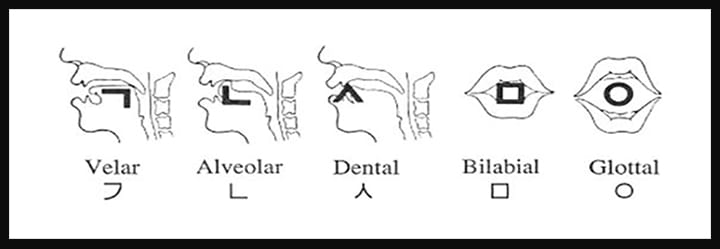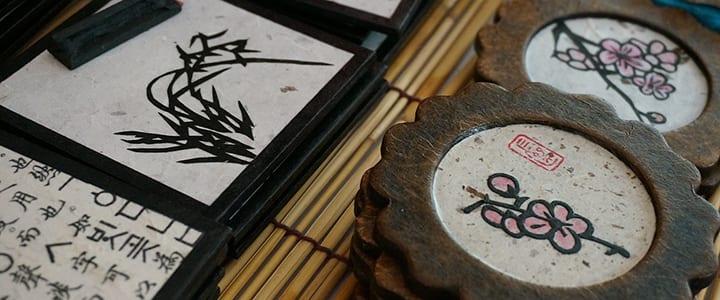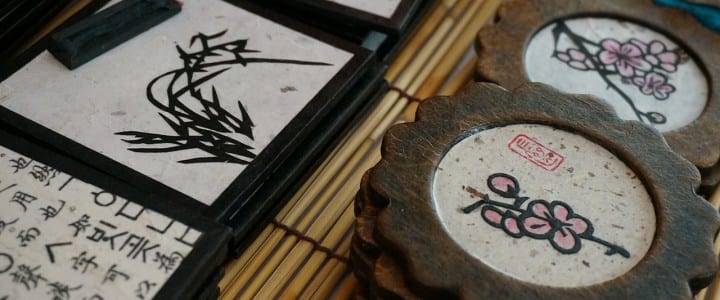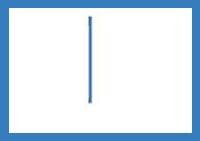Looking for a complete guide on how to learn the Korean alphabet for beginners? In this article, you’ll learn all you need to know about hangul – an essential component of the Korean language.
The Korean alphabet, also known as hangul, was invented by King Sejong the Great and his scholars in 1443. It was proclaimed the official alphabet in 1446, and is one of King Sejong’s greatest and most unique achievements.
Hangul is a phonetic system that is both scientifically and philosophically designed. To help you learn hangul, let’s break it down into its basic components.
Learn the Korean Alphabet for Beginners
Part 1: Hangul Consonants
The five basic consonants (ㄱ, ㄴ, ㅁ, ㅅ, ㅇ) in the Korean alphabet are symbolic of how each sound is pronounced physically (using your mouth). “ㅁ,” for instance, is the figure of a mouth with two lips open.

“ㅇ” is the figure of a throat, while “ㄴ” is what the tongue looks like after you pronounce an “n-” sound.
These five elements are varied to make 14 other consonants (and even more, if necessary).
Part 2: Hangul Vowels
The next step in the process for how to learn the Korean alphabet involves mastering your vowels.
The vowels in the Korean alphabet are designed with nature in mind. Follow these steps to learn hangul vowels.
The three elements that compose variations of vowels in hangul are actually the traditional symbols for heaven, earth, and man. First, draw a circle and name it “sky” or “heaven.”
The smaller circle that looks like a dot, is one of the three fundamental symbols that construct vowels in hangul.
Next, draw a square and name it “Earth.” Each line represents one of four directions: North, South, East and West.
Each straight line becomes one of three fundamental symbols that construct vowels in hangul.
Now draw a vertical line and name it “man.” The combinations of these three elements make 21 commonly used vowels in the Korean alphabet. *Please note that modern hangul now uses short lines instead of dots.
For starters, let’s take a look at some of the different combinations of “ㅣ” and “•”.
When “•” is placed on the right side of “ㅣ”, it becomes “ㅏ” or “A”.
When “•” is placed on the left side of “ㅣ”, it becomes a darker sound: “ㅓ” or “eo”. These are just a couple examples of the vowels in the Korean alphabet.
Part 3. Hangul Syllables
Unlike in English, in the Korean language, each syllable is its own individual unit.
For instance, “banana” has three syllables. If you write it in hangul, it becomes “바나나.” The first syllable is a complete unit with one consonant “ㅂ” and one vowel “ㅏ”.
When all three syllabic units are written without spaces, it makes one word that now has a meaning.
One unit consists of three parts: the first consonant, the vowel, and the last consonant. While the first two are the essential components to make a unit, the last consonant is not necessary.
SEE ALSO: Intro to Korean Numbers
Practicing the Korean Alphabet
Once you learn the Korean alphabet, you can get practice by spelling out simple words. For example, let’s take some common English names and spell them out in hangul.
- John: ㅈ [j] + ㅗ [oh] + ㄴ [n] = 존
- Jackson: ㅈ [j] + ㅐ [ă] or [ae] + ㄱ [k] + ㅅ [s] + ㅡ [ə] + ㄴ [n] = 잭슨
Writing John and Jackson in Korean is pretty straightforward, but the following is a little more complicated.
With the name “Esther,” we’re missing the first consonant in the first unit, and missing the vowel in the second unit. For those syllables, starting right from the vowel in English, simply add “ㅇ” in place of the first consonant.
In Korean, two consonants cannot be written consecutively without a vowel. So we also need to add “ㅡ”, a neutral “eu” sound.
So, here is how you would write Esther in Korean:
- Esther [ĕstər] = {ㅇ [-] + ㅔ [ĕ]} + {ㅅ [s] + ㅡ [eu]} + {ㄷ [t] + ㅓ [ə], [r] is silent} = 에스더
This is a lot of information for your first hangul lesson, but don’t get discouraged – no one learns a new language overnight!
If you need more help learning the Korean alphabet for beginners, try working with a Korean teacher. Korean lessons are a great way to improve your skills quickly and effectively!
Photo by Gonzalo Baeza
Maile Proctor





